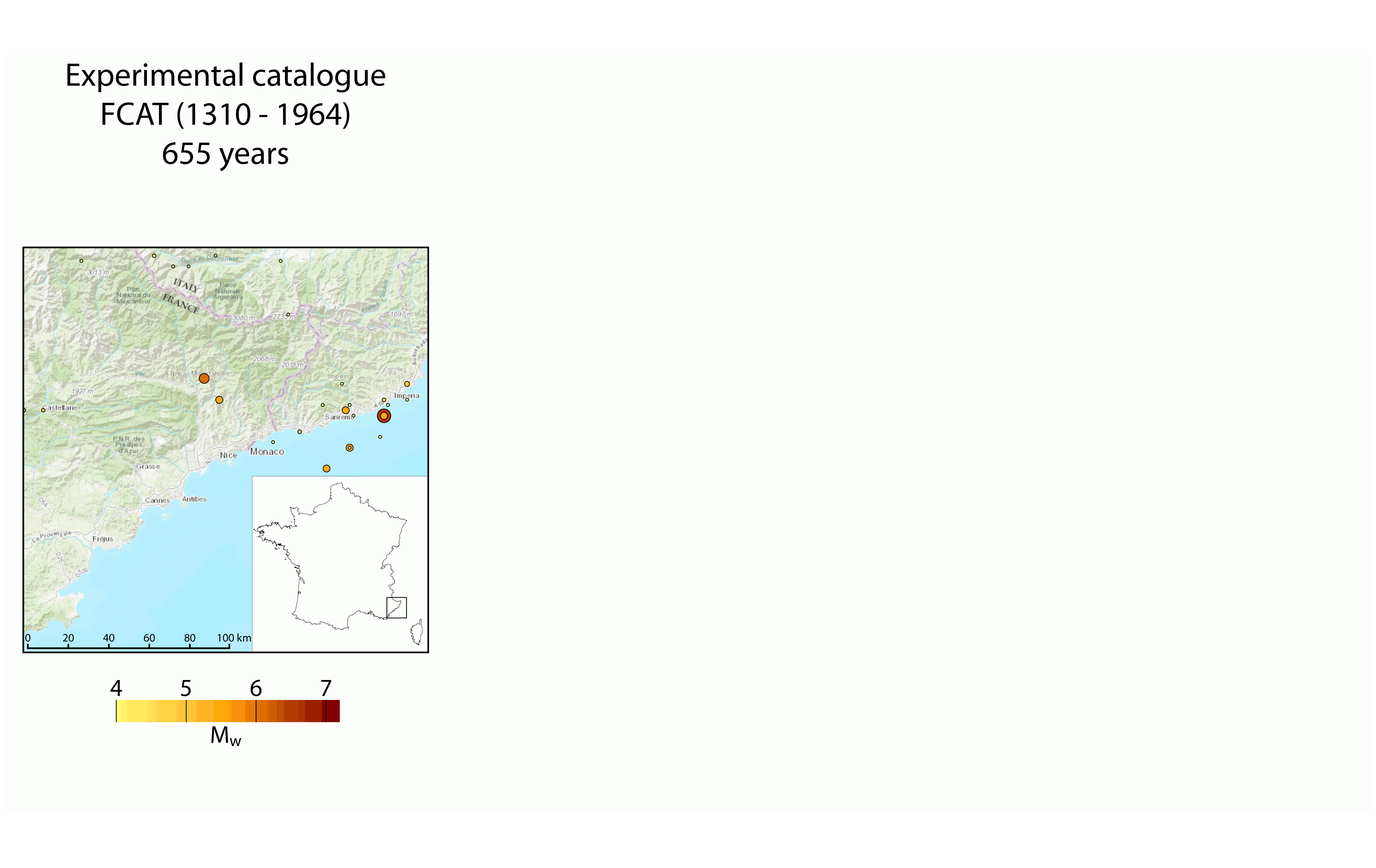On the 25th of June 2021, Corentin will defend his work entitled: "Stochastic generator of earthquakes in low-to-moderate seismic activity context: from data to hazard. Study case in France mainland."

The defense will be streamed online using Microsoft Teams. Save the date!
Abstract: French mainland seismicity is considered to be low to moderate due to its remoteness from tectonic plate boundaries. A first consequence is that the origins of its seismicity are harder to understand than in active regions close to tectonic plate boundaries. Another consequence is the lack of available data (recorded earthquakes but also strain rates, active faults...). These two observations make it difficult to estimate seismic hazard in low-to-moderate seismic areas.
The proposed approach is to generate synthetic earthquakes by combining observation and theoretical knowledge on the seismicity of the studied territory. This generator is based on a three-step scheme: (i) the temporal draw of main shocks, (ii) their spatial draw conditioned by magnitude and finally (iii) the generation of aftershocks they produce.
The temporal step needs a recurrence rate. Past seismicity of the whole studied area is analysed thanks to the non-parametric inter event time method, in order to obtain this desired recurrence rate. Computing the recurrence rate at the whole territory scale allows to: keep the maximum quantity of data, reduce the return periods and therefore estimate main shock frequencies directly from observed data for each magnitude. An implementation has been developed to overcome the accuracy fall of the inter event time method observed when data is sparse.
The spatial step needs a regionalization and a spatial density representing seismicity. The regionalization allows maximum magnitude limitation in space: each region is characterized by an allowed maximal magnitude. Location of a synthetic earthquake with a given magnitude is drawn in the spatial density only within regions that allow this magnitude.
Aftershocks are generated around main shocks thanks to the Bath law and the proportion - magnitude distribution of aftershocks.
The seismic hazard produced by each of the generated earthquakes (main shocks and aftershocks) is computed using a set of weighted Ground-Motion Prediction Equations. Weights depend on the earthquake magnitude and the source-site distance. They are estimated by European ground-motion database RESORCE. Finally, from direct observation of the seismic hazard produced by synthetic earthquakes over one million years, annual probabilities of exceedance can be easily calculated.
Keywords: low-to-moderate seismicity, earthquake generator, stochastic, hazard, France
Many thanks to the external PhD Committee members: Prof. Fabrice Cotton (GFZ, Potsdam University), Prof. Eric Calais (ENS), Prof. Françoise Courboulex (Géoazur, Université Côte d’Azur), Dr. Céline Beauval (ISTerre, Université Grenoble-Alpes) and Dr. Paola Traversa (EDF).
Supervisors: Jean-Marc Montel (CRPG, Université Lorraine), François Bonneau and Pierre Tinard (CCR).
Collaboration:Paul Cupillard.
